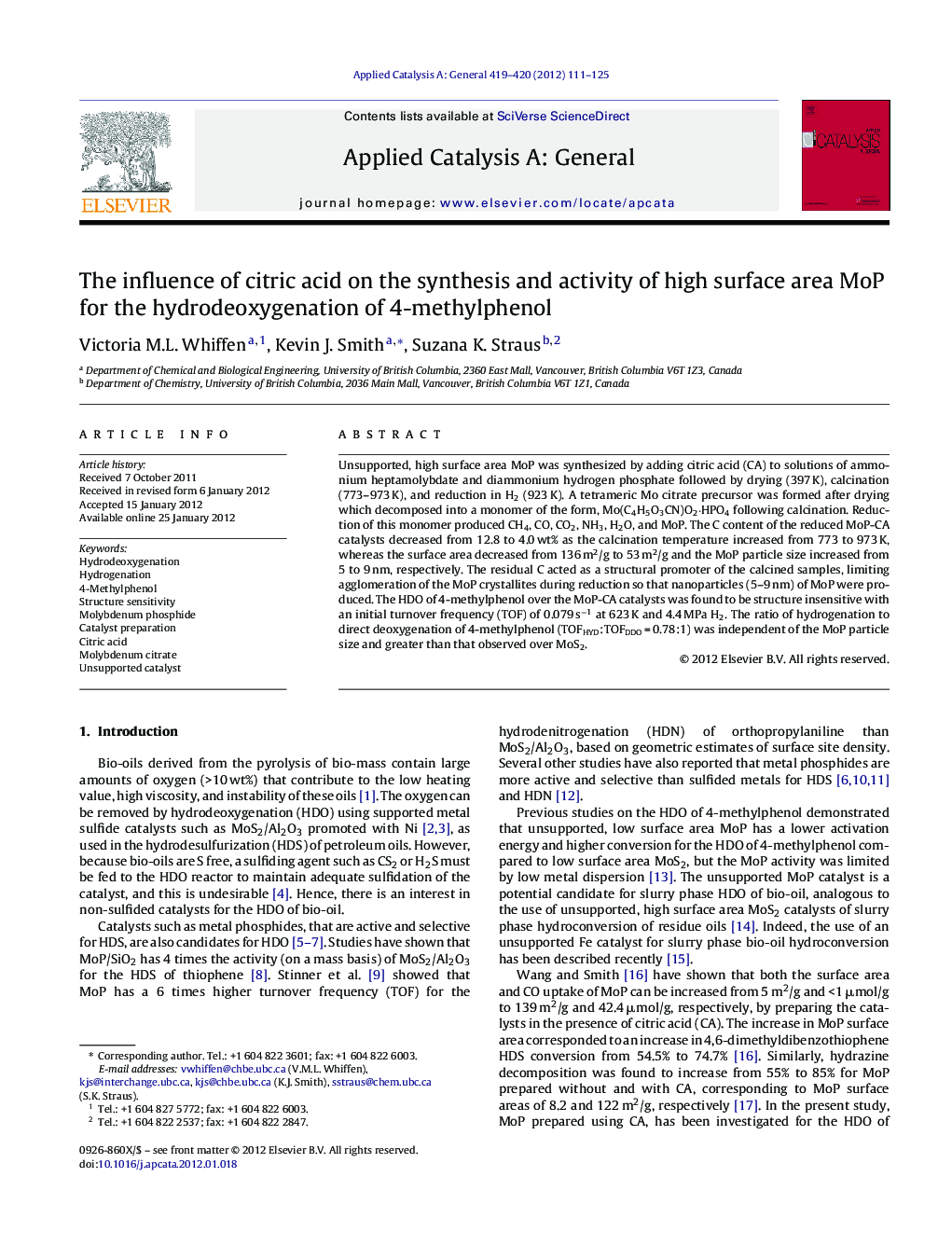| Article ID | Journal | Published Year | Pages | File Type |
|---|---|---|---|---|
| 41033 | Applied Catalysis A: General | 2012 | 15 Pages |
Unsupported, high surface area MoP was synthesized by adding citric acid (CA) to solutions of ammonium heptamolybdate and diammonium hydrogen phosphate followed by drying (397 K), calcination (773–973 K), and reduction in H2 (923 K). A tetrameric Mo citrate precursor was formed after drying which decomposed into a monomer of the form, Mo(C4H5O3CN)O2·HPO4 following calcination. Reduction of this monomer produced CH4, CO, CO2, NH3, H2O, and MoP. The C content of the reduced MoP-CA catalysts decreased from 12.8 to 4.0 wt% as the calcination temperature increased from 773 to 973 K, whereas the surface area decreased from 136 m2/g to 53 m2/g and the MoP particle size increased from 5 to 9 nm, respectively. The residual C acted as a structural promoter of the calcined samples, limiting agglomeration of the MoP crystallites during reduction so that nanoparticles (5–9 nm) of MoP were produced. The HDO of 4-methylphenol over the MoP-CA catalysts was found to be structure insensitive with an initial turnover frequency (TOF) of 0.079 s−1 at 623 K and 4.4 MPa H2. The ratio of hydrogenation to direct deoxygenation of 4-methylphenol (TOFHYD:TOFDDO = 0.78:1) was independent of the MoP particle size and greater than that observed over MoS2.
Graphical abstractFigure optionsDownload full-size imageDownload high-quality image (225 K)Download as PowerPoint slideHighlights► High surface area MoP was prepared by mixing citric acid with metal salt solutions. ► Mo(C4H5O3CN)O2·HPO4 was produced following calcination. ► Reduction of Mo(C4H5O3CN)O2·HPO4 yielded MoP nanoparticles and residual C. ► C acted as a structural promoter to limit agglomeration of the MoP crystallites. ► The hydrodeoxygenation of 4-methylphenol is shown be structure insensitive over MoP.
